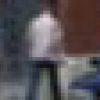Free Online Productivity Tools
i2Speak
i2Symbol
i2OCR
iTex2Img
iWeb2Print
iWeb2Shot
i2Type
iPdf2Split
iPdf2Merge
i2Bopomofo
i2Arabic
i2Style
i2Image
i2PDF
iLatex2Rtf
Sci2ools
ICPR
2008
IEEE
2008
IEEE
Object detection at multiple scales improves accuracy
For detecting objects in natural visual scenes, several powerful image features have been proposed which can collectively be described as spatial histograms of oriented energy. The HoG [3], HMAX C1 [12], SIFT [10], and Shape Context feature [2] all represent an input image using with a discrete set of bins which accumulate evidence for oriented structures over a spatial region and a range of orientations. In this work, we generalize these techniques to allow for a foveated input image, rather than a rectilinear raster in order to improve object detection accuracy. The system leverages a spectrum of image measurements, from sharp, fine-scale image sampling within a small spatial region to coarse-scale sampling of a wide field of view. In the experiments we show that features generated from the foveated input format produce detectors of greater accuracy, as measured for four object types from commonly available data-sets.
Computer Vision | Foveated Input Image | ICPR 2008 | Object Detection Accuracy | Small Spatial Region |
Related Content
| Added | 05 Nov 2009 |
| Updated | 06 Nov 2009 |
| Type | Conference |
| Year | 2008 |
| Where | ICPR |
| Authors | Stanley M. Bileschi |
Comments (0)

